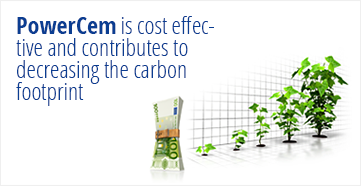Projects
México City, railemplacement

In the North of Mexico City, next to highway 57 (Mexico City – Queretaro) a Rail terminal is reconstructed by using PowerCem based Technology. The terminal is heavily used, on this 70.000 m 2 terminal, every day 2.000 containers are handled. The product RoadCem is used to strengthen the current hydraulic unbound material.
Due to the use of RoadCem an economic solution is achieved with an improved quality. Which leads to a safer and a higher volume of handling the container movements.
By using RoadCem an impermeable stabilization is achieved, which will prevent the occurrence of potholes. Due to the unique mechanical properties of a RoadCem stabilization (High flexibility and strength) the pavement structure is able to bear high traffic loads like the Reach stackers without the occurrence of deformations or cracks. During the reconstruction of the terminal, the heavily used terminal was operational and the reconstruction had to be finished as early as possible. By using RoadCem this is possible because the existing granular material is used, so there is no need for excavation and import of additional granular materials.
The RoadCem is mixed with the existing hydraulic unbound material. The total thickness of the stabilization is 0,4 m, above a sandy gravel existing base.
On the areas where the reach stackers are driving and turning, high horizontal friction forces occur. To increase the durability of the RoadCem stabilization a layer of 0,035 m of asphalt assures a long life time period [> 20 years] of the stabilization.
PowerCem based technology leads to a substantially shorter construction time and lower costs in comparison with traditional methods. The use of PowerCem based technology results in a time advantage and economic benefits now and in the future.
By constructing a terminal it is important that the level of the future stabilization is prepared in advance before mixing the RoadCem and the cement.
To create a stabilization surface which is highly resistant against high horizontal friction forces it is required to have a surface where the pores are closed.
The RoadCem is mixed with the in-situ material with a dosage of 1,7 kg/m 3. After the RoadCem is mixed, cement is added with a dosage of 150 kg/m 3 and mixed with water, and the in-situ material. The reconstructed stabilization is than cured for 24 hours.
The reconstructed stabilization is resistant to heavy cargo transport loads as well as to high horizontal friction forces. It is calculated to stack the containers 5 high. Due to the high strength of the RoadCem stabilization, the static loads of five full containers on top of each other can be stacked, without causing damage on the RoadCem stabilization.











